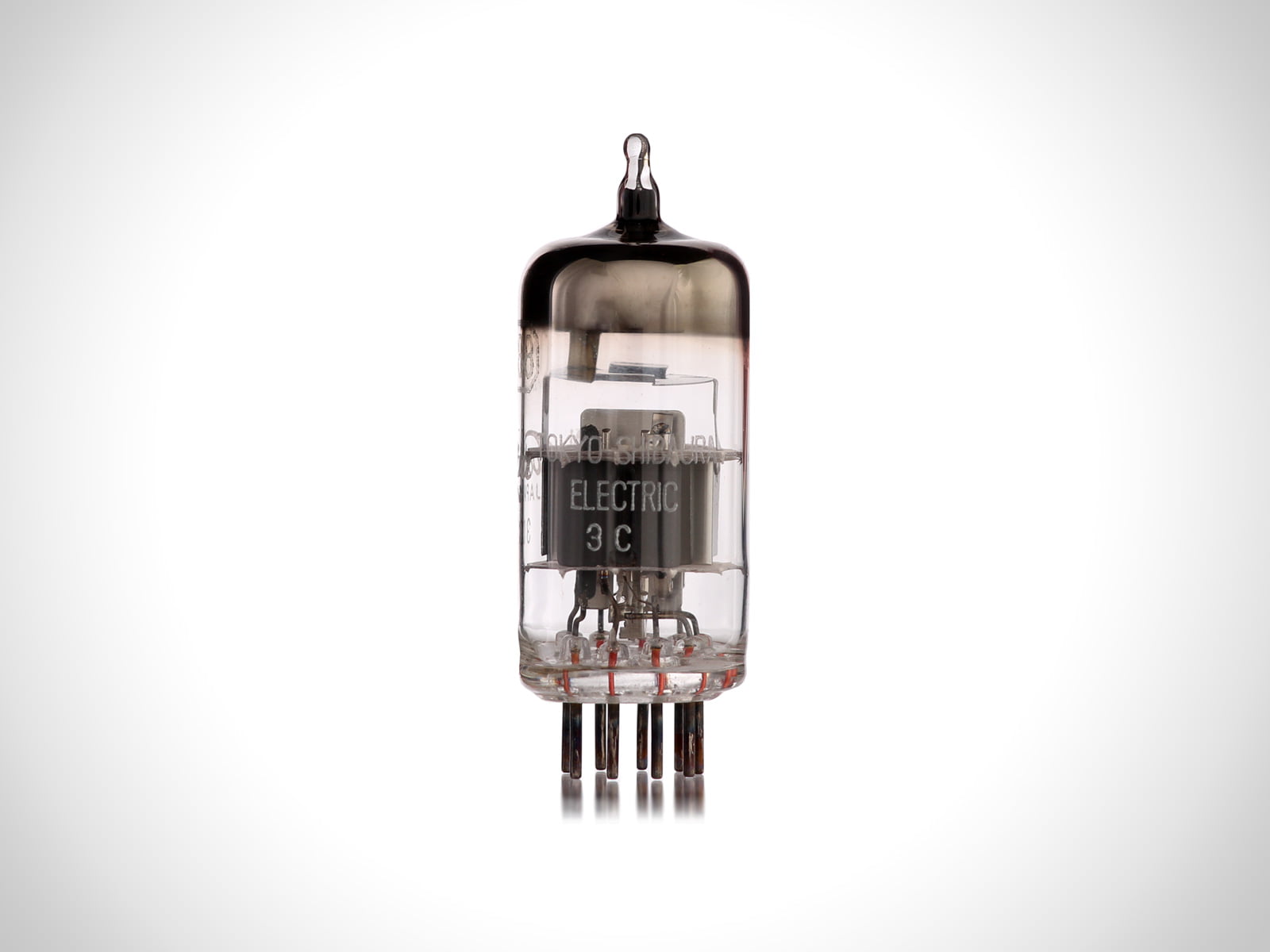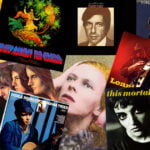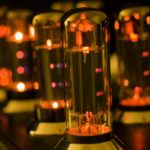It’s the time of year for saving money!
At one point in my life, I walked around with the same song stuck in my head for three years. What made it worse is that the song was the theme from “Green Acres.” I would walk down the hallway at work with that annoyingly infectious riff repeating in my head over and over. “Fresh Air! Times Square!” This episode prompted me to research the phenomenon of what scientists colloquially call earworms; most accessible to laypersons would be Oliver Sacks’ excellent book Musicophilia in which the author extensively discusses the way the brain can perpetuate aural recall, sometimes to the detriment of the individual. Just recently there was an article on CNN about earworms that reinforced the common element of repetitive melodies. This phenomenon can actually become helpful, specifically when interpreting popular music and how that might relate to picking the right components for your two-channel audio system. Maybe repetition could be applied to my interest in music, and perhaps help me train my ears to determine which tubes sound best with my hardware.
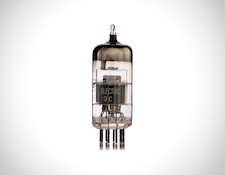 Humans have notoriously terrible aural recall. There are many ways to improve this by training, one of the most famous being the Suzuki method of classical music instruction developed in Japan by Shinichi Suzuki in the mid 20th century. Since I was exposed to the Suzuki method at age five, I was afforded a sizeable advantage in subsequently teaching myself to play guitar. What I didn’t expect as I aged and listened to a great deal of guitar-oriented music is that aural training had allowed me to begin to hear subtle nuances in recordings and actually not only predict who the player was, but also what the instrument and signal path likely was. A great example of this is the classic track written by Mike Campbell and Tom Petty for Stevie Nicks’ 1981 debut Album Bella Donna, “Stop Draggin’ my Heart Around.” When I started critically analyzing this song, I already knew that Campbell frequently preferred a semi-hollow Rickenbacker guitar; Campbell’s excellent solo work definitely sounded to me as it was more than just a semi-hollow guitar. But it didn’t sound like a humbucker, and definitely didn’t sound like a Rickenbacker. Mercifully, YouTube came to the rescue with the original video, showing Campbell playing what appears to be a late fifties refinished Gibson ES-125T with a single P90 pickup. I was thrilled to realize that it was indeed possible for me to apply aural recall to music I knew well and identify subtle details to make the experience more enjoyable.
Humans have notoriously terrible aural recall. There are many ways to improve this by training, one of the most famous being the Suzuki method of classical music instruction developed in Japan by Shinichi Suzuki in the mid 20th century. Since I was exposed to the Suzuki method at age five, I was afforded a sizeable advantage in subsequently teaching myself to play guitar. What I didn’t expect as I aged and listened to a great deal of guitar-oriented music is that aural training had allowed me to begin to hear subtle nuances in recordings and actually not only predict who the player was, but also what the instrument and signal path likely was. A great example of this is the classic track written by Mike Campbell and Tom Petty for Stevie Nicks’ 1981 debut Album Bella Donna, “Stop Draggin’ my Heart Around.” When I started critically analyzing this song, I already knew that Campbell frequently preferred a semi-hollow Rickenbacker guitar; Campbell’s excellent solo work definitely sounded to me as it was more than just a semi-hollow guitar. But it didn’t sound like a humbucker, and definitely didn’t sound like a Rickenbacker. Mercifully, YouTube came to the rescue with the original video, showing Campbell playing what appears to be a late fifties refinished Gibson ES-125T with a single P90 pickup. I was thrilled to realize that it was indeed possible for me to apply aural recall to music I knew well and identify subtle details to make the experience more enjoyable.
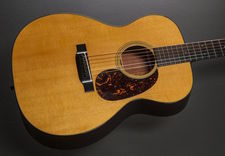 As I aged and gathered some disposable income, I developed an expensive acoustic and electric guitar habit. When I first became serious about picking a few permanent guitars, I figured a vintage Martin was the perfect traditional instrument. Many players rave about them and their famous tone; yet, when I went to actually audition various instruments at Fred Oster’s Vintage Instruments in Philadelphia, I was underwhelmed by the majority of vintage Martins and Gibsons that I played over the next few years. As a matter of fact, the truly stellar instruments were few and far between, with quite a few duds passed over. Only at the very end of the search did I find a 1937 000-18, a guitar that was not only slightly underpriced based on a mildly depressed market, it was also in excellent original condition and had “The Martin Sound.” And playing it was an absolute epiphany. What people experience as dry, woody, fundamental with almost unstoppable headroom and volume was readily apparent from the first strum. Instantly, I knew what I had been missing and what people had been raving about all that time. (If one wants to hear this in a decent recording, I would direct you to Julian Lage and Critter Eldridge’s “Mean Mother Blues” on their Avalon collaboration.) I reference the ’37 000-18 as an example not of conspicuous consumption but more to demonstrate that sometimes it takes years of in-person ear training before that epiphany happens. I played plenty of prewar Martins both in rosewood and mahogany, and wasn’t hearing anything special until I played that one guitar. Now that I’ve heard it, I feel confident that I could pick up any vintage Martin and decide whether or not I thought it had “the sound.” Since it happened with guitars, I was hoping it could happen with my hifi kit. However, one receives much less tactile feedback from only listening as opposed to both hearing and feeling, so we must rely heavily on aural recall in comparisons.
As I aged and gathered some disposable income, I developed an expensive acoustic and electric guitar habit. When I first became serious about picking a few permanent guitars, I figured a vintage Martin was the perfect traditional instrument. Many players rave about them and their famous tone; yet, when I went to actually audition various instruments at Fred Oster’s Vintage Instruments in Philadelphia, I was underwhelmed by the majority of vintage Martins and Gibsons that I played over the next few years. As a matter of fact, the truly stellar instruments were few and far between, with quite a few duds passed over. Only at the very end of the search did I find a 1937 000-18, a guitar that was not only slightly underpriced based on a mildly depressed market, it was also in excellent original condition and had “The Martin Sound.” And playing it was an absolute epiphany. What people experience as dry, woody, fundamental with almost unstoppable headroom and volume was readily apparent from the first strum. Instantly, I knew what I had been missing and what people had been raving about all that time. (If one wants to hear this in a decent recording, I would direct you to Julian Lage and Critter Eldridge’s “Mean Mother Blues” on their Avalon collaboration.) I reference the ’37 000-18 as an example not of conspicuous consumption but more to demonstrate that sometimes it takes years of in-person ear training before that epiphany happens. I played plenty of prewar Martins both in rosewood and mahogany, and wasn’t hearing anything special until I played that one guitar. Now that I’ve heard it, I feel confident that I could pick up any vintage Martin and decide whether or not I thought it had “the sound.” Since it happened with guitars, I was hoping it could happen with my hifi kit. However, one receives much less tactile feedback from only listening as opposed to both hearing and feeling, so we must rely heavily on aural recall in comparisons.
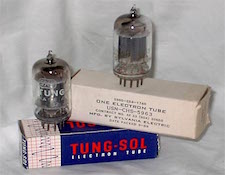 As time went on my musical obsessions progressed to include electric guitar amplifiers. The leap is very short from nerding out on the guitars themselves to tube rolling on a decent amp. My first experiments began with a late nineties Marshall DSL 401. This sweet little forty-watt combo has four ECC83 preamp valves and four EL84 output valves. To be honest I can’t remember what came stock, but in the almost twenty years that I’ve owned it I’ve tried multiple different brands of tubes, all to varying success. It’s sometimes hard to describe how different tubes sound to different people, so I listened to well-known examples of popular music in which the guitar takes center stage in order to paint the picture. When I first started tube rolling with the Marshall, I tried Telefunken EL84s and found they worked well with the clean, glassy tone that Mark Knopfler employs on the Dire Straits eponymous debut album. I didn’t feel they were meant to be overdriven, but more to bring out that extremely smooth sound for which Knopfler and his Stratocaster set on middle/bridge pickup is known. Conversely, when I changed out the power tubes to Electro-Harmonix EL84s, I felt that these tubes practically demanded to be overdriven and matched extremely well with Stevie Ray Vaughan’s rude biting tone on his debut album, Texas Flood.
As time went on my musical obsessions progressed to include electric guitar amplifiers. The leap is very short from nerding out on the guitars themselves to tube rolling on a decent amp. My first experiments began with a late nineties Marshall DSL 401. This sweet little forty-watt combo has four ECC83 preamp valves and four EL84 output valves. To be honest I can’t remember what came stock, but in the almost twenty years that I’ve owned it I’ve tried multiple different brands of tubes, all to varying success. It’s sometimes hard to describe how different tubes sound to different people, so I listened to well-known examples of popular music in which the guitar takes center stage in order to paint the picture. When I first started tube rolling with the Marshall, I tried Telefunken EL84s and found they worked well with the clean, glassy tone that Mark Knopfler employs on the Dire Straits eponymous debut album. I didn’t feel they were meant to be overdriven, but more to bring out that extremely smooth sound for which Knopfler and his Stratocaster set on middle/bridge pickup is known. Conversely, when I changed out the power tubes to Electro-Harmonix EL84s, I felt that these tubes practically demanded to be overdriven and matched extremely well with Stevie Ray Vaughan’s rude biting tone on his debut album, Texas Flood.
In part two of this piece, I’ll begin to carry the tube-rolling discussion forward to 2-channel audio components. Stay tuned.
About the Author
Matthew Patrick is an Emergency and Diving Medicine physician living in Key West, Florida with his wife, two young sons, and three dogs.
When not in the ER, he spends his time fishing and diving in the Keys and indulging a longstanding obsession with acoustic guitars. Matthew also writes down his thoughts on audio on his personal blog, thecluelessaudiophile.com.
